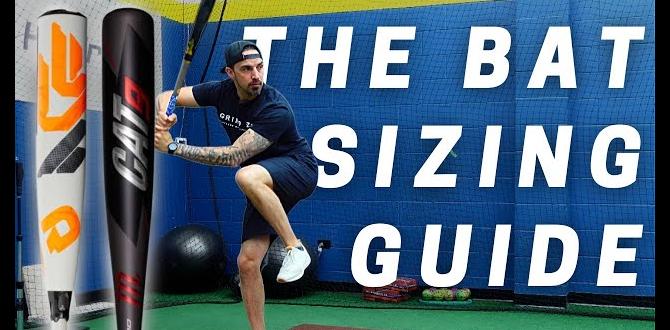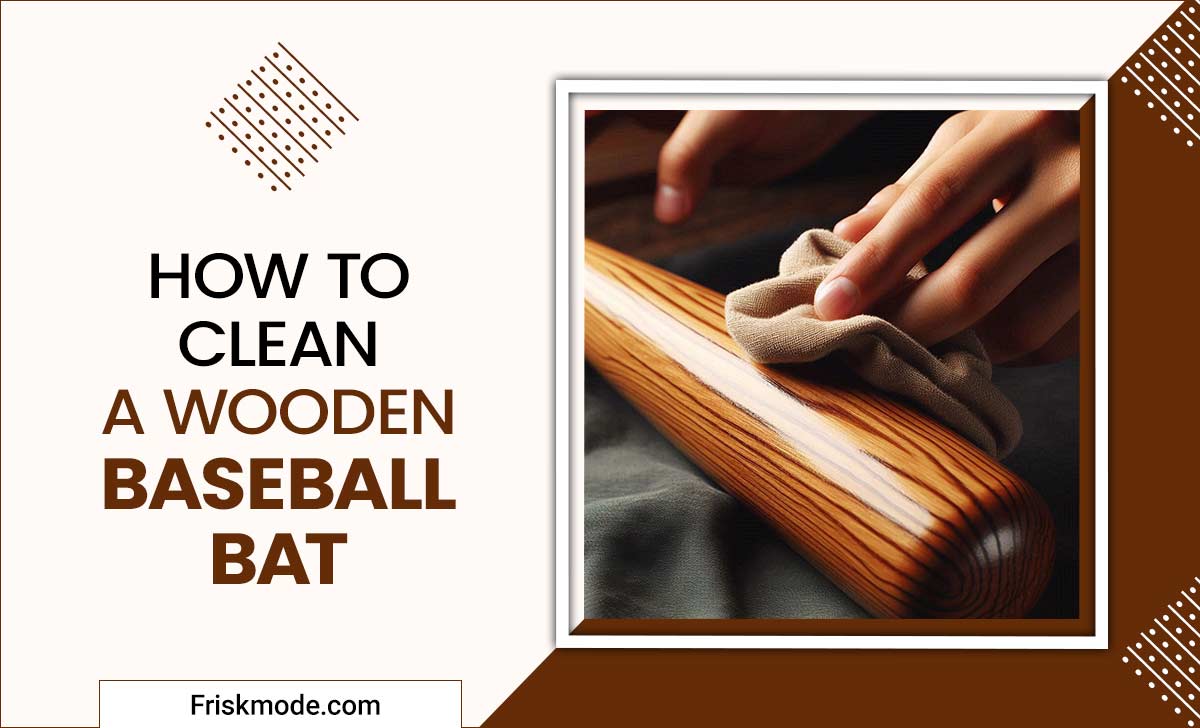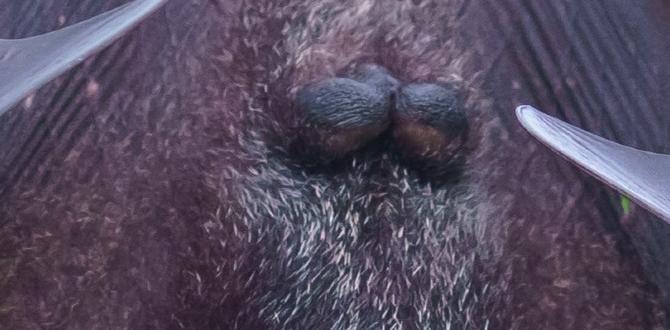Quick Summary: Youth catcher gear and umpire gear share some protective elements but serve distinct purposes. Catchers need full body protection tailored for the position’s demands, while umpires require durable, comfortable gear allowing unrestricted movement to call the game safely and accurately. Understanding these differences ensures the right equipment for every role on the field.
Ever found yourself on the baseball field, watching the catcher crouch low or the umpire make tough calls, and wondered about all that protective gear? It can look a bit confusing, especially when you’re just starting out or helping a young player. You might even see some pieces that look pretty similar. That’s totally normal! The world of baseball equipment is vast, and knowing what’s what, especially when comparing a catcher’s setup to an umpire’s, can feel like deciphering a secret code.
But don’t sweat it! As John P. Miller from FriskMode, I’m here to break it all down for you. My goal is to make understanding baseball gear as simple as a tap-back to first base. We’ll explore the specific needs of a young catcher and what makes umpire gear unique, ensuring you know exactly what’s essential for safety, performance, and a truly enjoyable game for everyone involved.
This guide will demystify the differences, highlight key components, and help you make smart choices, whether you’re gearing up for your first season behind the plate or just curious about the roles on game day. Get ready to see the game – and the gear – with new clarity!
The Big Difference: Youth Catcher Gear vs. Umpire Gear
At first glance, the gear worn by a youth baseball catcher and an umpire might seem to have a lot in common. Both involve protection, and there’s definitely some overlap in the types of padding and hard shells used. However, their fundamental purposes and designs are quite different, driven by the unique demands of each role.
A catcher’s job is to block pitches, frame strikes, and be a defensive anchor. This requires extensive protection against high-speed pitches, foul tips directly to the body, and collisions. Umpiring, on the other hand, is about officiating the game. An umpire needs to have a clear view of the play, make quick decisions, and maintain freedom of movement to follow the action, all while being shielded from stray balls and bats.
Let’s dive into the specifics to understand why these two sets of gear, while sharing a common goal of safety, are tailored so differently.
Youth Catcher Gear: The Ultimate Protective Shield
When a young player steps into the catcher’s position, they are signing up to be the primary defender behind home plate. Their gear is designed to absorb impact and prevent injury from a barrage of fastballs, curveballs, and the occasional foul tip that whizzes past the bat. The key is comprehensive coverage and robust padding.
Every piece of catcher’s gear has a specific function to protect a vulnerable part of the body, allowing the player to focus on making plays rather than fearing the impact.
The Catcher’s Helmet
This is often the most recognizable piece of catcher’s gear. A catcher’s helmet, also known as a mask and helmet combo, is a crucial piece of equipment. It’s designed to protect the entire head, face, and throat.
- Jaw Protection: The mask includes steel or durable composite bars that form a cage to protect the face from direct impact of the ball.
- Skull Protection: The helmet itself is a hard shell that covers the top and back of the head, absorbing impact from powerful shots or falls.
- Throat Guard: A dangling piece of plastic or rubber extends below the mask to protect the throat, a very vulnerable area.
- Comfort and Fit: Modern helmets often feature enhanced padding, adjustable straps for a snug fit, and good ventilation.
For youth players, ensuring the helmet meets current safety standards, like those set by the ASTM standards for baseball/softball catchers’ masks, is paramount. A properly fitted helmet can mean the difference between a close call and a serious injury.
The Catcher’s Chest Protector
This piece of equipment is worn over the upper body and is designed to protect the torso and upper abdomen from pitched balls and foul tips. It typically extends from the neck down to the groin area.
- Impact Absorption: Chest protectors use thick padding and often rigid plates to spread the force of any impact across a larger area, reducing the chance of bruising or more severe injuries.
- Coverage: The length and width of the protector are important. It needs to cover the heart, lungs, and ribs effectively.
- Flexibility: While protective, the chest protector should allow enough movement for the catcher to transition between a crouch and a standing position and to throw.
Youth models are sized appropriately for younger players, ensuring they aren’t bulky or restrictive while still offering vital protection.
The Catcher’s Leg Guards
Knees, shins, and feet are constantly exposed to danger on the field, whether it’s a wild pitch bouncing unexpectedly or a foul ball skimming off the bat and heading low. Catcher’s leg guards are like armored boots.
- Full Shin and Knee Protection: These guards cover the entire shin from the knee down to the top of the foot, with extensive padding and hard shells. They often include a “drop” or extension that protects the top of the foot.
- Patella Protection: A dedicated cup or reinforced area protects the kneecap, a common target for foul tips.
- Secure Fit: Multiple straps allow for a secure, adjustable fit, preventing the guards from shifting during play and ensuring they stay in place to offer maximum protection.
The design aims to offer maximum impact resistance while allowing for the necessary flexion and extension of the leg for a proper catching stance and quick movements.
The Catcher’s Mitt
This is not just any glove. A catcher’s mitt is exceptionally padded and has a deep pocket, designed specifically to catch fast pitches and absorb their impact.
- Padding: The mitt is significantly thicker and more padded than a fielder’s glove to cushion the sting of 70+ mph pitches.
- Deep Pocket: The deep pocket helps “cradle” the ball, making it easier to secure pitches and reducing the chance of them popping out.
- No Finger Stalls: Unlike fielder’s gloves, catcher’s mitts are one piece without individual finger stalls, contributing to their sturdy and rounded shape.
- Stiffness: New catcher’s mitts are notoriously stiff and require a significant break-in period, but once molded, they become an extension of the catcher’s hand.
A well-broken-in mitt not only protects the hand but also helps the catcher present pitches effectively to the umpire.
Umpire Gear: Clarity, Mobility, and Protection
An umpire’s role is to interpret and enforce the rules of baseball, ensuring fair play. While they are not actively making plays or blocking balls, they are positioned close to the action and need protection from errant balls, bats, and potential collisions. Their gear emphasizes visibility, comfort for long games, and unrestricted movement.
Think of umpire gear as protective apparel that allows them to do their job well, with their primary focus on officiating rather than physical defense.
The Umpire’s Face Mask/Chest Plate Combo
Umpires primarily use a combination of a hard-shell chest plate and a mask that offers facial protection. These are often designed as integrated units, but the emphasis is different from a catcher’s mask.
- Mask Design: Umpire masks typically feature a cage design that prioritizes a wide field of vision. While protective, the bars might be closer together in some areas to block a ball, but the overall frame is designed for maximum sightlines.
- Chest Protector: This is a key piece. Umpire chest protectors are designed to protect the torso but are generally less bulky than a catcher’s. They might be made of dense foam or hard plastic shells and feature a more streamlined profile.
- Flexibility: The design focuses on allowing the umpire to turn their head, bend, and move freely to follow plays.
- Coverage: They cover the face, throat, and chest but might not extend as low or as wide as a catcher’s chest protector, focusing on critical impact zones.
For younger umpires or those starting out, less bulky, more flexible options often exist, making it easier to learn the mechanics of umpiring.
Umpire Protective Shirts and Pads
Many umpires opt for specialized shirts or pads that integrate into their uniform to provide discreet protection. These are often worn under their uniform shirt.
- Built-in Padding: Some umpire shirts have strategically placed, low-profile padding in the chest, ribs, and sometimes shoulders. This padding is designed to absorb minor impacts without adding significant bulk.
- Under-Shirt Protection: These can also include padded sleeves or forearms, offering a layer of defense against errant bats or balls.
- Comfort and Breathability: The focus is on comfort for long periods and in various weather conditions, often using moisture-wicking fabrics.
The goal here is protection that doesn’t impede movement or make the umpire look visibly bulky.
Umpire Indicator and Other Tools
Beyond physical protection, umpires rely on specific tools to manage the game.
- Umpire Indicator: This is a small clicker used to keep track of balls, strikes, and outs. It’s essential for maintaining game flow.
- Plate Brush: A small brush used to sweep home plate clean of dirt and debris.
- Ball Bag: Umpires often carry a small bag for extra baseballs used during the game.
While not strictly “gear” in the protective sense, these tools are vital for an umpire’s functionality.
Key Differences Summarized
To make the distinctions crystal clear, let’s look at a side-by-side comparison:
| Feature | Youth Catcher Gear | Umpire Gear |
|---|---|---|
| Primary Function | Full body impact absorption, protection from high-speed pitches and collisions. | Protection from stray balls/bats, clear vision, maximum mobility for officiating. |
| Helmet/Mask | Full facial cage, skull, and throat protection; designed to withstand direct impact. | Wide field of vision, general facial and throat protection; designed for clear sightlines. |
| Chest Protector | Large, heavily padded, rigid; covers entire torso down to groin. | Streamlined, moderate padding; covers core upper torso/chest. |
| Leg Protection | Full shin, knee, and foot guards; heavily armored. | Minimal to no specialized leg guards required, relies on uniform trousers and potentially knee savers for ball retrieval. |
| Mitt | Heavily padded, deep pocket, rounded shape for catching pitches. | No specialized mitt required. |
| Mobility Emphasis | Balanced with protection; requires bending, squatting, quick reactions. | Maximum mobility is paramount for movement around the plate and field. |
| Bulkiness | Generally more bulky due to extensive padding. | Designed to be as low-profile as possible. |
When Does a Youth Catcher Need What?
For any young player aspiring to catch, having the right gear set is non-negotiable. Safety should always be the top priority.
Here’s a checklist for a young catcher:
- Catcher’s Helmet: A properly fitted helmet with a mask and throat guard is your first and most critical piece of equipment. Ensure it meets safety standards for youth leagues.
- Chest Protector: This should cover the torso extensively and should not restrict movement excessively when trying to throw.
- Leg Guards: Full leg guards are essential, protecting the knees, shins, and feet. Look for models with good strap systems for a secure fit.
- Catcher’s Mitt: A well-sized catcher’s mitt is a must. It needs to be broken in properly to make catching easier on your hand.
- Athletic Cup: While included in some chest protectors, a separate athletic cup is highly recommended for extra protection.
- Catcher’s Boxers/Compression Shorts: These can help with comfort and moisture management under the gear.
When selecting gear, remember to consider the player’s size and age. Equipment that is too large can be a safety hazard, hindering movement and potentially offering less effective protection. Brands like Rawlings, Wilson, and EvoShield offer excellent youth-specific lines.
When Does a Youth Umpire Need What?
For young umpires, the focus is on comfort, clear vision, and protection that doesn’t get in the way.
Here’s what a budding umpire might need:
- Umpire Mask/Face Shield: A mask with a good field of vision is key. For youth leagues, often a lighter-weight umpire mask is sufficient.
- Chest Protector: Look for a streamlined umpire chest protector that isn’t overly bulky. It should fit comfortably and allow for easy bending and turning.
- Umpire Shirt: Often, these shirts have built-in padding or are designed to accommodate separate chest/rib pads.
- Umpire Pants: Standard athletic pants are often fine, though dedicated umpire pants have a professional look and sometimes reinforced areas.
- Indicator: A trusty indicator for balls, strikes, and outs is essential for game management.
- Hat: A standard baseball cap, usually black or navy blue.
- Whistle: For certain situations or to get player attention.
For adult umpires, particularly in faster-paced adult leagues, there is a greater emphasis on robust protective gear. However, for youth games, the primary concern is enabling the umpire to perform their duties effectively and safely without encumbering them.
Pro Tips for Both Roles
Whether you’re looking to buy gear for a young catcher or curious about outfitting a youth umpire, here are some general tips:
- Fit is Paramount: Gear that fits poorly is not only uncomfortable but can also be a safety risk. Always try gear on, preferably with the player wearing their uniform and other protective items.
- Check League Rules: Different leagues and governing bodies (like Little League, Pony Baseball, USSSA) may have specific regulations regarding the type or standard of equipment allowed, especially for catcher’s gear.
- Don’t Skimp on Safety: Especially for catchers, invest in well-made, reputable safety equipment.
- Comfort Enhances Performance: For both roles, comfortable gear means a player or umpire can focus on their job instead of being distracted by gear issues.
- Maintenance Matters: Keep gear clean and inspect it regularly for wear and tear, especially straps, padding, and any structural components.
For umpires, understanding the basic umpire gear setup is crucial. For catchers, focusing on the full suite of protection is key. Both require a commitment to player safety and game integrity.
Frequently Asked Questions (FAQ)
Here are some common questions about catcher and umpire gear for youth players:
Q1: Can a young catcher use umpire gear for practices?
A: While umpire gear offers some protection, it is generally not sufficient for the demands of catching. Catcher’s gear is specifically designed with thicker padding and more robust construction to withstand the impact of high-speed pitches from the batter. Umpire gear prioritizes mobility and a wider field of vision. For practice or games, a catcher must wear full catcher’s gear.
Q2: What is the most important piece of catcher’s gear for a young player?
A: The catcher’s helmet






